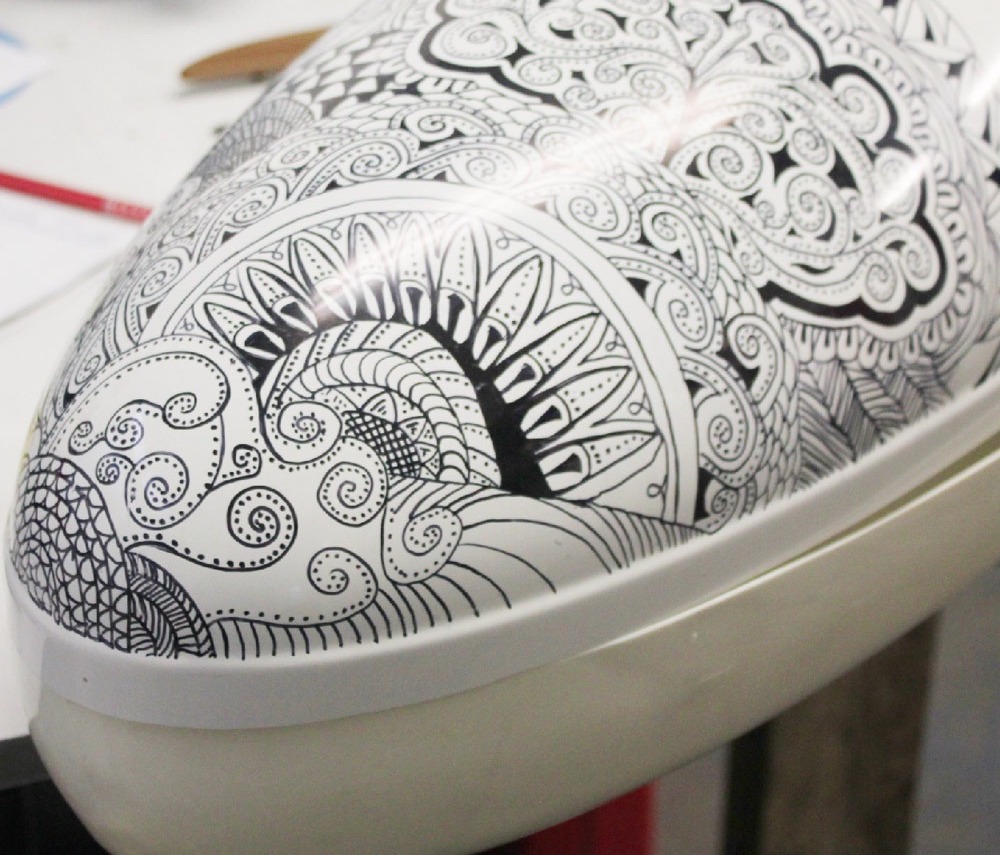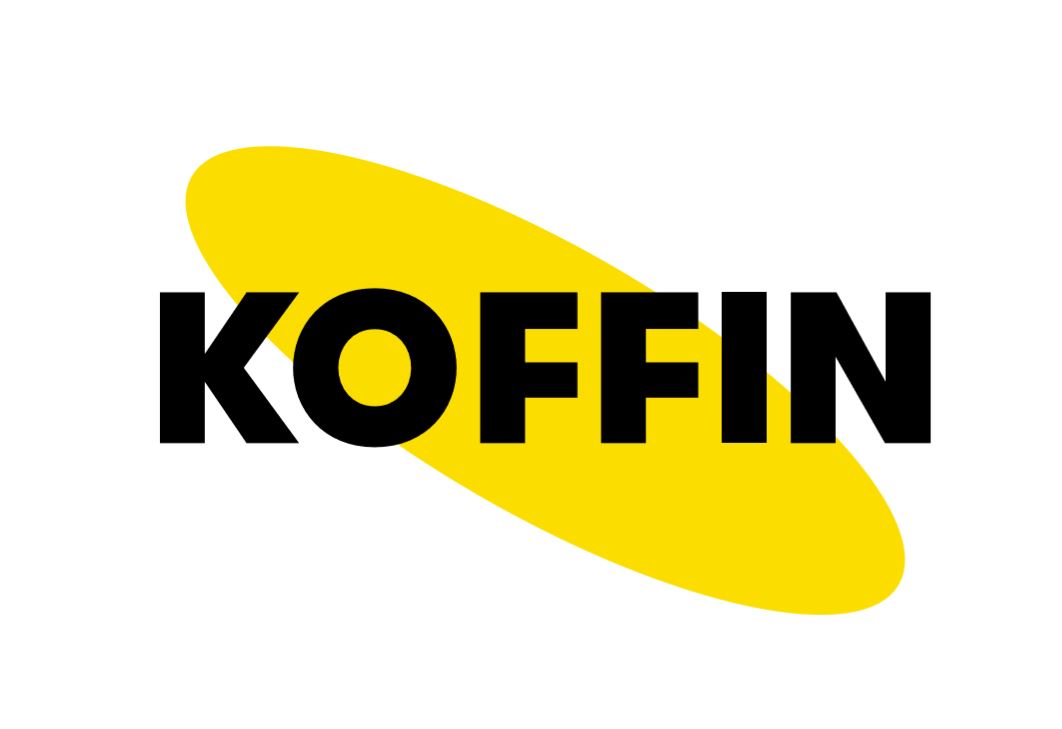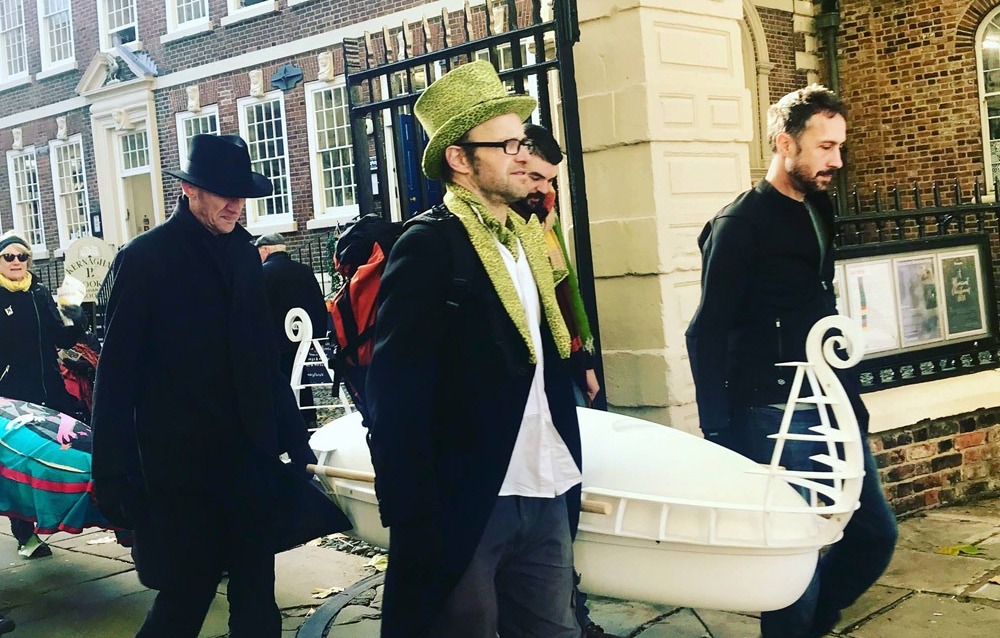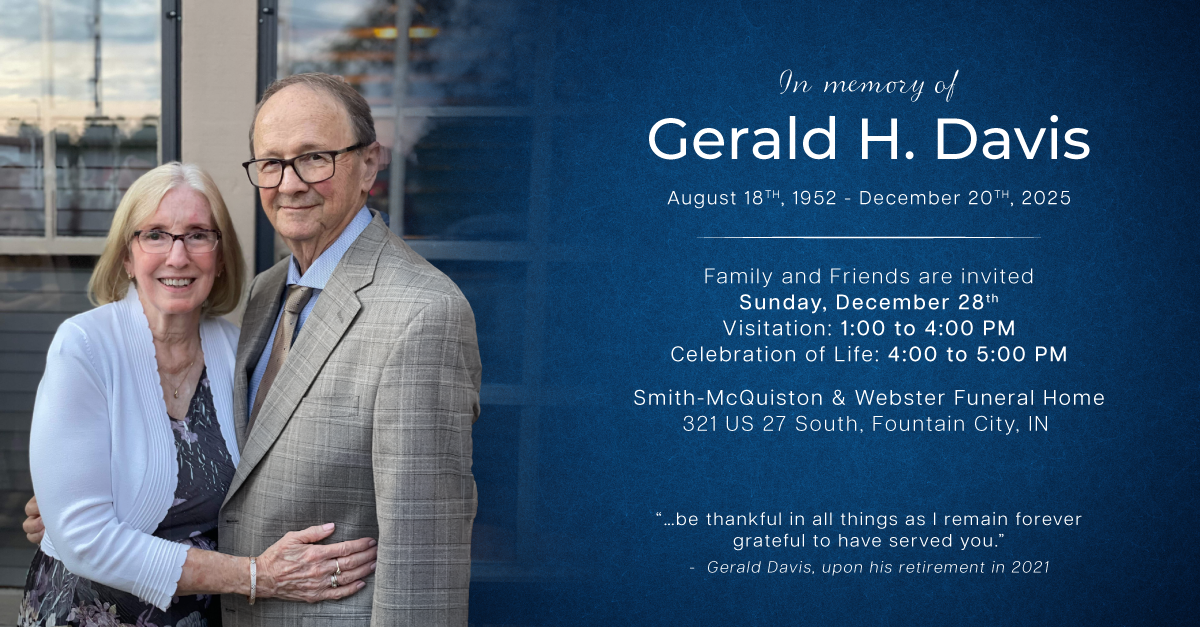Koffin Challenges Tradition with Affordable, Eco-friendly, Oval-shaped Burial Vessels
With an industry as old and fundamentally unchanged as deathcare, innovation and disruption are inevitable. UK artist Gina Czarnecki is one of those innovators. Inspired by her love of all things art and fueled by a negative experience with a dishonest director, Gina started Koffin, a Liverpool-based company that creates customized biodegradable coffins. Connecting Directors caught up with Gina to learn more about this startup that beautifully integrates death and design.
Connecting Directors: How did the Koffin company come about?
Gina Czarnecki: Koffin started in 2014 under a different name, The LastWish Company, Ltd. We rebranded and changed the name to The Koffin Company, Ltd in early 2018. At first, our company produced quarter-scale prototypes as concepts. In 2017 I received further funding to take my concepts to full-size working prototypes that were then exhibited in November 2018. To date, Koffin has been funded by the Arts Council England as a dual artwork and business project to employ local creatives, encourage regional manufacture, and develop an income stream from artwork to sustain my practice.
CD: Did a particular deathcare experience prompt you to start the company?
GC: When my dad died in 1995 I was outraged at the attitude of the funeral director. The explicit message was, “The more you love the more you spend.” There wasn’t much choice in coffins at the time – all very Victorian in style and all pretty environmentally toxic. An MDF coffin with wood veneer and fake brass handles cost us £1250 and didn’t express anything about my dad. Fast forward to 2013, when a friend told me she had put money back for her wake and had designed the whole service except the coffin. I created a cat-sphynx coffin for her from paper mache. It was rather spectacular, but I realized it would cost a lot to reproduce, and making a personalized coffin would be way beyond most people’s budgets. It occured to me that there was real need for a mass-producible starting point – like a blank canvas that you can decorate any way you want.

CD: How did you find the biodegradable material for Koffins?
GC: It was a long journey to find a material that could be a) mass-producible and b) the most environmentally beneficial. Lignin is one of the most abundant organic polymers on Earth, exceeded only by cellulose. Its 100% natural and 100% biodegradable and when burned or buried it produces no more CO2 than growing plants. It burns well, producing only 17% ash residue (many coffin materials produce 65%) and has won environmental awards for its sustainability.
CD: So how exactly is a Koffin constructed?
GC: By working with moldable biopolymers, we can create a more human shape that doesn’t have corners–we’ve been told by other coffin makers that ‘it’s the best shape’ for a coffin. It weighs 13.5 kilo – lighter than any other coffin on the market excluding the basic cardboard ones. Koffin also stacks inside itself – 10 bases inside one another with 10 lids stacked inside of the base stack – so 10 Koffins take up the space of one traditional coffin or casket. Being moulded from one sheet, the base has no joins or corners. So, unlike baskets it is leak-proof and unlike boxes it has no glues and screws. The strap guides on the underside of the Koffin were also designed to help carrying on shoulders and to fit on a standard car roof rack (not occupied, of course).
CD: What sort of testing did you perform on your Koffin prototype?
GC: The Koffin is being fully tested by the Funeral Furnishing and Manufacturers Association who will give it the seal of approval if it passes nine rigorous tests. We know that the material is good as it was designed for purpose. We’ve done load testing and know that it can take at least 150 kg [about 330 pounds]. We have also tested it at a crematorium to ensure that it rolls well on the rollers into the furnace well.
 Lastly, ECoffins representatives are taking it around to all their funeral directors to assess demand and solicit ideas for possible design alterations.
Lastly, ECoffins representatives are taking it around to all their funeral directors to assess demand and solicit ideas for possible design alterations.
CD: How have people reacted to pre-purchasing their own coffin?
GC: Anyone can and could always buy their own coffin, but in the UK its not something that people would do. But with more people making funeral plans, more are making decisions now about what sort of coffin they want, and they’re checking facts online. For example, not many people know you don’t officially need a coffin in the UK; the legal position is it is necessary only for the body to be covered and supported. It’s not likely that people buy their own coffins and keep them until they need them, but with Koffin you can choose your own design now and we’ll deliver when it’s needed. One woman we spoke to had been told that her life expectancy was three weeks. Her focus for her last weeks was to find a pink coffin. It helped her cope and gave her a lot of joy when she knew she could give a final smile to her friends.
CD: Why do you think people are gravitating to Koffin?
GC: It varies. Older females who have expressed a desire to “have one of these” do so because they want to design them – they like the colour and possibilities and want choice. They are possibly the first generation of “professional working women” in their families; they’re independent and solvent and don’t want to leave the choice to others. We aim to offer the best material, the best shape, the most personalisable, and the best price. I think it’s the cocktail of all combined.
CD: Are Koffins available in any funeral homes?
GC: They will be soon. We’re in discussion with a few coffin suppliers and trying to find a way to keep the price low by selling direct to customers and distributing via funeral directors. It’s early days and we are still negotiating these details but the mission is to be as easy to find as possible.
CD: Lastly, what do you see as the future of Koffin?
GC: At the moment we are preparing for investment by way of crowdfunding campaign to launch into production. I’m going to sell the first 30 Koffins we decorated for the November exhibition at the Oratory in Liverpool to raise some of the funds needed. All the manufacturers have revised their pricing to share the load in terms of getting this to market at a fair, affordable cost. We want to expand geographically, and we want the Koffin Studio to be an accessible workshop space where families can come to talk about ideas, see the Koffins being painted and printed and decorate their Koffins themselves. I have interest from the USA (Los Angeles), Australia, and Korea, so I hope that soon we can make these available to anyone regardless of their geographical location.
Article by Connecting Directors’ contributor Patricia Hartley





